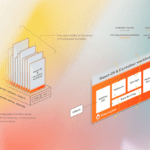In an industry constantly evolving to accommodate the speed of modern development, System Initiative brings a fresh perspective to infrastructure automation. Founded in 2019 by industry veterans Adam Jacob (creator of Chef), Mahir Lupinacci, and Alex Ethier, System Initiative combines the worlds of real-time infrastructure management, collaboration, and automation into a powerful visual platform. Their goal is to rethink how developers and infrastructure engineers design, manage, and interact with infrastructure, especially in cloud environments.
This article provides an in-depth overview of System Initiative’s core offerings, technology, and the implications for DevOps, SREs, and infrastructure teams in the modern era.
What is System Initiative?
System Initiative is a platform that allows users to manage infrastructure in a completely visual way. Instead of relying on static code or traditional configuration management tools like Terraform or Puppet, System Initiative merges real-time diagrams with infrastructure management. The key distinction here is that the diagram is the infrastructure—not just a representation of it. This idea bridges the gap between design and execution, enabling users to deploy, modify, and manage their infrastructure directly from the same interface.
The platform is based on the idea that collaboration, automation, and visualization can coexist seamlessly in DevOps workflows. The core mission of System Initiative is to improve the agility of infrastructure operations by making it more accessible and flexible while maintaining the level of control needed in complex cloud-native environments.
Key Features of System Initiative
1. Real-time, Visual Infrastructure Management
System Initiative uses a visual, interactive graph model to represent infrastructure components. Unlike conventional static architecture diagrams, System Initiative provides an environment where the diagram is not just a visual reference but is the actual infrastructure. You can directly modify, scale, or update components from the interface itself. For example, spinning up an EC2 instance, modifying security groups, or redeploying a VPC can all be done from within the visual model.
2. API-Driven Flexibility
The platform is built to interact with a variety of infrastructure services, including AWS, Docker, Google Cloud, and other environments that provide APIs. The platform can integrate with any system that exposes an API, which means it can manage a hybrid environment with ease. Whether your infrastructure is cloud-based, on-premises, or a combination of both, System Initiative can seamlessly control it as long as an API is available.
This flexibility makes it possible to automate nearly any part of your infrastructure lifecycle—from provisioning to scaling to monitoring.
3. Self-hosting & Dogfooding
One of the most exciting aspects of System Initiative is that the company uses its own platform to manage its infrastructure. This process of dogfooding means the product is battle-tested for real-world scenarios. For instance, the company uses System Initiative to host and manage its own SaaS product, a clear indication of its trust in the tool’s robustness.
Their multi-tenant SaaS infrastructure runs on AWS EC2 instances with NATS for service communication, databases, and Firecracker VMs for running isolated functions. Firecracker, originally developed by AWS for Lambda, is used here to securely execute untrusted code. This approach provides agility and scale while maintaining security through tight isolation of workloads.
4. Firecracker VM Integration
Firecracker plays a pivotal role in how System Initiative handles user-written functions. By using Firecracker micro VMs, System Initiative can quickly spin up lightweight virtual machines to run code in isolated environments, providing the security of full virtualization with the speed and efficiency of containers. This approach allows users to run their own TypeScript or Python code on demand within a secure, disposable VM, making automation safe even when running untrusted code from customers.
5. Collaboration with Change Sets
A Git-like change management model ensures that infrastructure modifications are collaborative and controlled. When a change is proposed, it’s added to a change set, which functions similarly to a Git branch. Team members can work on the same infrastructure simultaneously, review proposed changes, and approve or deny modifications before they are merged into the main environment. This is a key feature for reducing errors during deployments, as it allows for peer review and a structured, controlled process for infrastructure changes.
This model supports real-time collaboration on infrastructure decisions, enabling infrastructure teams, developers, and operations to work together in a much more integrated way than traditional tools.
6. Automation and Custom Functions
The platform also lets users write their own functions or automation scripts that interact with the visual infrastructure. These functions can be used to perform routine tasks, such as health checks, log analysis, or auto-scaling operations, and can be tied directly to specific infrastructure components within the diagram.
Since System Initiative uses a graph-based approach, these functions can easily walk the graph of your infrastructure to determine relationships and dependencies, ensuring that changes or automations happen in the correct order or context.
7. Future Expansion: Importing Existing Infrastructure
While System Initiative currently excels in creating and managing infrastructure from scratch, the team is working toward features that would allow users to import existing infrastructure from their cloud environments. This would allow teams to integrate System Initiative with pre-existing deployments, letting them visualize and manage their infrastructure without needing to start from scratch.
The Power of Visualization: Why System Initiative Stands Out
Infrastructure-as-Code (IaC) tools like Terraform or AWS CloudFormation have been revolutionary in allowing teams to programmatically manage infrastructure. However, they often come with steep learning curves and require users to manage complex configuration files. System Initiative’s key advantage is its ability to reduce complexity through visualization while still maintaining flexibility and power through automation.
The visual approach allows teams to:
- Understand infrastructure dependencies and relationships at a glance.
- Make real-time updates to infrastructure with immediate feedback.
- Collaborate effectively by visualizing proposed changes before they are applied.
This can make onboarding new team members easier, as they don’t need to immediately learn a new scripting language or tool. Instead, they can interact with a visual interface that mirrors the actual state of the infrastructure.
How to Get Started with System Initiative
System Initiative is currently available to a limited group of users through an early access program. To get involved or request access, you can visit their official website at System Initiative, where you’ll find more details about the product, community resources, and links to their active Discord server.
As of 2023, the company raised $15 million in Series A funding from Scale Venture Partners, Amplify Partners, Battery Ventures, and Storm Ventures, signaling strong investor confidence in their vision. The platform’s revenue-generation strategy, coupled with its emphasis on user-driven innovation, positions System Initiative as a leader in the next generation of infrastructure automation.
Conclusion
System Initiative represents a bold step forward in infrastructure management. By combining the flexibility of APIs, the power of visualization, and the collaboration of Git-like change sets, it addresses the limitations of traditional IaC tools while providing a more intuitive, real-time interface for infrastructure management. With features like Firecracker VM integration for secure automation and the ability to self-host, System Initiative is setting the stage for a new era in how we think about DevOps and infrastructure as a whole.
For more insights and access, head over to System Initiative’s website and explore how you can transform your infrastructure management processes today.



Leave a Reply